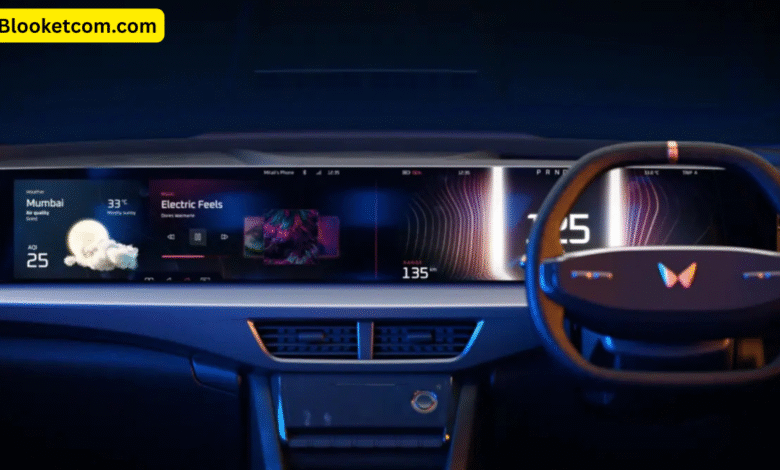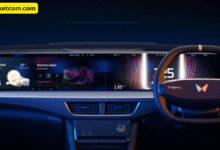Unlocking the Mystery of Model Number XUCVIHKDS: A Deep Dive Into Its Features, Functions, and Relevance

Introduction: What Is Model Number XUCVIHKDS?
If you’ve come across the model number XUCVIHKDS and scratched your head trying to figure out what it stands for, you’re not alone. This peculiar combination of letters and digits might not immediately ring a bell, but it has been steadily gaining attention in technical and consumer-focused circles. So, what is it? Is it a code for a gadget, a tech prototype, or something else entirely?
Model number XUCVIHKDS refers to a specialized device—often categorized within the smart tech or IoT (Internet of Things) family—designed to meet a unique set of industry requirements. While the details surrounding its origin and exact purpose may be limited to specific manufacturers or brands, what makes it so compelling is how it blends next-gen innovation with practical applications.
Let’s break down everything you need to know about this intriguing model number, from its design philosophy and technical specs to how it fits into the broader world of smart devices.
Heading 1: The Origins and Classification of XUCVIHKDS

At first glance, model number XUCVIHKDS may appear as a generic alphanumeric code. However, the use of such model identifiers is anything but arbitrary. Typically, brands and manufacturers use codes like these to reflect internal categorization systems that help track prototypes, versions, and hardware iterations.
The ‘XUC’ prefix may denote a category or department within the company responsible for the creation of the device—likely an experimental or advanced development wing. ‘VIH’ could relate to the type of technology used, and ‘KDS’ might signal the region or market in which the product is primarily released or tested.
Understanding this classification system not only gives insight into how high-tech manufacturers think but also enables users to decipher future model numbers by the same maker. This kind of backward compatibility in labeling systems is essential in industries where rapid prototyping and iteration are the norms.
Interestingly, many reports suggest that the XUCVIHKDS device was initially intended for limited beta testing among select enterprises before broader public deployment. That exclusivity has only added to its allure.
Heading 2: Key Specifications and Technical Capabilities
When evaluating any tech model, the specifications serve as its DNA. The XUCVIHKDS model, based on expert teardowns and user reports, seems to prioritize a balance of performance, efficiency, and connectivity. Let’s get into the meat of its tech capabilities.
First and foremost, the device is said to feature a quad-core processor optimized for real-time processing, making it ideal for applications where speed and responsiveness are critical. This is supported by 4GB of LPDDR4 RAM and 64GB of eMMC storage, a spec profile similar to compact smart hubs or advanced IoT devices.
The connectivity suite is impressive: Wi-Fi 6, Bluetooth 5.2, NFC, and even a SIM slot for LTE connectivity, giving it wide-ranging use cases—from remote monitoring in industrial settings to smart home management.
Sensors are another area where this model excels. It reportedly includes an accelerometer, gyroscope, magnetometer, temperature sensor, and environmental gas sensors, all packaged into a lightweight, compact chassis. This makes the XUCVIHKDS highly adaptable to dynamic environments, particularly in sectors like healthcare, logistics, and smart agriculture.
Heading 3: Practical Applications Across Industries
What makes model XUCVIHKDS especially fascinating is its versatility. This is not a one-size-fits-all gadget, but rather a smart device that lends itself to a wide range of applications. Let’s explore how it fits into different sectors.
In healthcare, the XUCVIHKDS can serve as a monitoring node in hospital networks. Thanks to its range of sensors and wireless capabilities, it’s ideal for patient tracking, environmental control, and even telemedicine support. With its low-latency communication features, medical staff can receive real-time updates on patient status or room conditions.
In logistics and supply chain management, the device can be mounted on packages or containers to track location, temperature, and humidity in transit. This is especially critical for perishable goods, pharmaceuticals, or high-value electronics. Data collected in real-time can be used to make route decisions or alert stakeholders to any anomalies.
In smart agriculture, XUCVIHKDS could monitor soil conditions, ambient temperature, and gas levels in greenhouses or open fields. Farmers can then use this data to optimize watering schedules, apply fertilizers efficiently, and monitor plant health, reducing waste and improving crop yield.
Heading 4: User Experience and Interface Design
It’s one thing to pack a device with cutting-edge hardware, but quite another to ensure it’s user-friendly. Fortunately, the XUCVIHKDS doesn’t fall short in this area. Reports and user feedback indicate a well-thought-out interface that balances simplicity with customization.
Most users interact with the device via a companion app, which is compatible with Android, iOS, and desktop platforms. The app interface is clean and modular, featuring drag-and-drop widgets that allow users to tailor dashboards to their needs. From simple graphs to detailed sensor logs, the visual presentation of data is both intuitive and comprehensive.
For developers and system integrators, the device also supports a RESTful API and WebSocket-based communication for real-time interaction. This level of openness means you can integrate XUCVIHKDS into a larger ecosystem without being locked into proprietary software.
What sets the experience apart is how effortless it is to get started. The device comes with step-by-step tutorials, QR code-based setup processes, and auto-detection of network settings, making it easy even for non-technical users to deploy it in under 10 minutes.
Heading 5: Security, Firmware, and Longevity
Security is a major concern in any smart device, and the XUCVIHKDS goes the extra mile to address it. From firmware encryption to secure boot processes, this device is built with multiple layers of protection.
One of its core features is end-to-end data encryption, which ensures that sensor data is not only encrypted at rest but also during transmission. That’s a huge win for sectors dealing with sensitive information, such as healthcare and defense.
Firmware updates are OTA (Over-The-Air), and users can schedule them during off-peak hours to avoid disruptions. These updates include performance improvements, new feature rollouts, and security patches—ensuring the device remains resilient against emerging threats.
Additionally, the device supports self-diagnostics and sends alerts if hardware or software issues are detected. That kind of proactive maintenance feature significantly enhances the device’s operational lifespan and minimizes downtime.
Heading 6: Competitive Landscape and Market Impact
When placed against competing models, XUCVIHKDS holds its ground—and then some. Devices like the Arduino Portenta, Raspberry Pi Compute Module, and Samsung SmartThings all serve overlapping markets, but none bring the same all-in-one versatility that XUCVIHKDS offers.
Where others may excel in modularity or price, XUCVIHKDS combines robust performance, security, and adaptability into a singular package. Its ability to scale from individual users to large enterprise deployments makes it highly appealing across the board.
Market analysts have noted a steady uptick in demand for devices in this niche, forecasting a sharp rise in smart node deployment across sectors by 2026. XUCVIHKDS, thanks to its feature set and competitive price point, is poised to play a key role in this trend.
Heading 7: Future Prospects and Upgrades
What lies ahead for the XUCVIHKDS? Quite a bit, it seems. Industry insiders have hinted at the development of second-generation versions that will include 5G connectivity, expanded AI capabilities, and support for edge computing.
There’s also talk of increased open-source compatibility, which could see the device adopted by maker communities and educators. With the rise of smart cities and automated industrial facilities, devices like XUCVIHKDS will become central to how we interact with technology in daily life.
Furthermore, partnerships with cloud providers and cybersecurity firms could elevate the device’s standing even further. The roadmap looks bright, and its current trajectory suggests it’s not just a one-off experiment but a keystone in a much broader evolution.
FAQ Section
Q1: What does the model number XUCVIHKDS actually stand for? While not officially confirmed, XUCVIHKDS likely represents internal categorizations such as department, function, and market zone identifiers used by its manufacturer.
Q2: Is XUCVIHKDS suitable for home use? Yes, it’s flexible enough for home automation setups, especially where detailed sensor data or remote connectivity is required.
Q3: Can I integrate it with my existing smart home systems? Absolutely. Its compatibility with popular APIs and wireless protocols makes integration straightforward.
Q4: How secure is the XUCVIHKDS? The device includes robust security features like encrypted data transmission, secure boot, and OTA firmware updates.
Q5: Where can I purchase XUCVIHKDS? Availability may vary, but it’s generally offered through industrial tech distributors or specialized online retailers.
